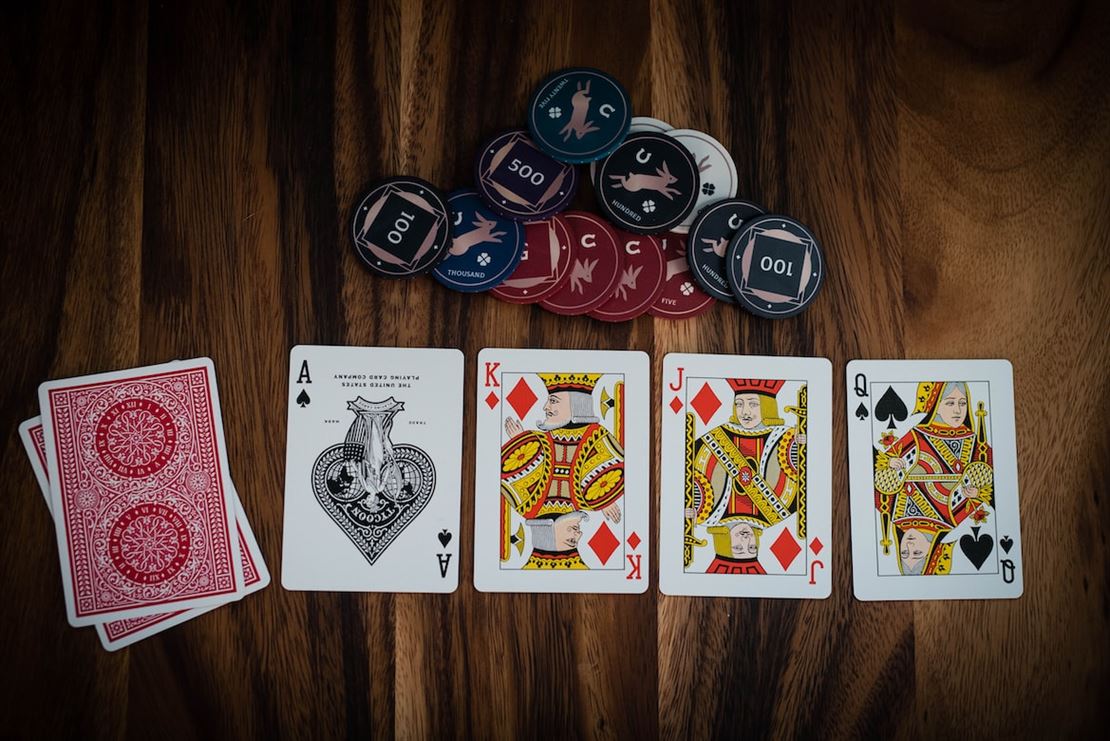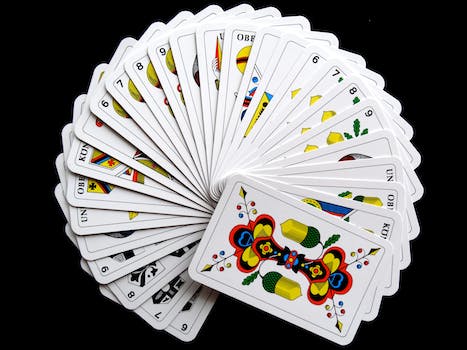In the world of poker, success often hinges on the ability to take calculated risks. While luck plays a role, skilled players understand that strategic decision-making is crucial for long-term profitability. This article explores various strategies that can help poker players maximize their profits by effectively assessing and managing risks. By understanding the importance of calculated risks and implementing these strategies, players can enhance their chances of success in the highly competitive world of poker.
Strategic Approaches to Increase Your Poker Profits
One of the most important aspects of maximizing your poker profits is understanding the concept of expected value (EV). EV is a mathematical calculation that represents the average amount of money you can expect to win or lose on a particular play over the long run. By making decisions that have a positive EV, you can increase your overall profitability.
To calculate EV, you need to consider both the probability of winning and the potential payout. For example, if you have a 50% chance of winning a $100 pot, your EV would be $50. If the pot were larger, say $200, your EV would increase to $100. By consistently making plays with positive EV, you can slowly but steadily increase your profits.
Another strategy to maximize your poker profits is to carefully manage your bankroll. Your bankroll is the amount of money you have set aside specifically for playing poker. It is crucial to have a bankroll that is large enough to withstand the inevitable swings and variance that come with the game.
A general rule of thumb is to have at least 20 buy-ins for the stakes you are playing. For example, if you are playing $1/$2 no-limit hold’em, you should have a bankroll of at least $4,000. By having a sufficient bankroll, you can avoid going broke during downswings and give yourself the best chance of long-term success.
In addition to managing your bankroll, it is essential to carefully choose the games and opponents you play against. Not all poker games are created equal, and some will be more profitable than others. Look for games with weaker players and higher average pots, as these will give you a better chance of making money.
Furthermore, pay attention to the table dynamics and adjust your strategy accordingly. If you find yourself at a table with tight players who only play premium hands, you can loosen up your starting hand requirements and play more aggressively. On the other hand, if you are up against loose and aggressive players, you may want to tighten up and wait for premium hands.
Lastly, it is crucial to continually analyze and improve your game. Poker is a constantly evolving game, and what worked yesterday may not work today. Study the strategies of successful players, read books and articles, and watch training videos to stay ahead of the competition.
Additionally, keep detailed records of your sessions and review them regularly. This will help you identify any leaks in your game and make necessary adjustments. By constantly striving to improve, you can stay one step ahead of your opponents and maximize your poker profits.
Calculating Risks: How to Maximize Your Poker Profits
One of the most important aspects of calculating risks in poker is understanding the concept of expected value (EV). EV is a mathematical calculation that represents the average amount of money you can expect to win or lose on a particular play over the long run. By analyzing the potential outcomes and their probabilities, you can make informed decisions that maximize your EV.
To calculate the EV of a play, you need to consider the potential gains and losses. For example, if you have a flush draw with nine outs (cards that will complete your hand), and your opponent bets $50 into a $100 pot, you need to determine whether calling the bet is a profitable move. By estimating the probability of hitting your flush and the potential payout if you do, you can calculate the EV of calling. If the EV is positive, it means that calling is a profitable move in the long run.
Another strategy to maximize your poker profits is to understand the concept of pot odds. Pot odds refer to the ratio of the current size of the pot to the cost of a contemplated call. By comparing the pot odds to the odds of completing your hand, you can determine whether a call is profitable or not.
For example, if the pot is $100 and your opponent bets $20, you need to determine whether calling the bet is a profitable move. If the odds of completing your hand are 4 to 1 (20% chance), and the pot odds are 6 to 1 (14% chance), calling would be a profitable move in the long run.
Furthermore, it is crucial to consider your position at the poker table when calculating risks. The later your position, the more information you have about your opponents’ actions, allowing you to make more informed decisions. In early position, you have less information and should be more cautious with your plays.
Additionally, understanding your opponents’ playing styles and tendencies can help you calculate risks effectively. By observing their betting patterns, bluffing frequency, and hand selection, you can gain valuable insights into their strategies. This information can be used to make more accurate risk assessments and exploit their weaknesses.
Lastly, managing your bankroll is essential for maximizing your poker profits. It is crucial to set aside a dedicated poker bankroll and only risk a small percentage of it in each game. By practicing proper bankroll management, you can minimize the risk of ruin and ensure that you have enough funds to withstand the inevitable variance in poker.
Effective Poker Profit Strategies: Taking Calculated Risks
One of the most important aspects of taking calculated risks in poker is understanding the concept of expected value (EV). EV is a mathematical calculation that represents the average amount of money a player can expect to win or lose on a particular play or decision. By analyzing the potential outcomes and assigning probabilities to each, players can make decisions that maximize their EV.
To illustrate this concept, let’s consider a scenario where a player is faced with a decision to call a bet on the river. The pot is $100, and the opponent bets $50. The player believes that there is a 25% chance of winning the hand if they call. By calculating the expected value, the player can determine whether calling is a profitable decision.
In this case, the player’s potential winnings are $100 if they win the hand and lose $50 if they lose. The expected value can be calculated by multiplying the potential outcomes by their respective probabilities and summing them up. In this scenario, the expected value of calling would be ($100 * 0.25) – ($50 * 0.75) = $25 – $37.5 = -$12.5. Since the expected value is negative, it would be a losing decision to call in this situation.
Another strategy to maximize poker profits is to identify and exploit the weaknesses of opponents. By observing their playing style, tendencies, and patterns, players can gain valuable insights into their opponents’ strategies. This information can then be used to make more informed decisions and take calculated risks that exploit their opponents’ weaknesses.
For example, if a player notices that an opponent tends to fold to aggressive bets on the flop, they can adjust their strategy accordingly. By making larger bets in these situations, the player can put pressure on their opponent and force them to fold more often, increasing their overall profitability.
Furthermore, players can also take calculated risks by bluffing strategically. Bluffing is a technique where a player bets or raises with a weak hand in order to deceive their opponents into folding stronger hands. However, bluffing should not be done randomly or recklessly. Instead, it should be based on a thorough understanding of the opponent’s tendencies and the overall dynamics of the game.
By carefully selecting the right moments to bluff and considering the potential risks and rewards, players can effectively incorporate bluffing into their overall strategy. This calculated risk-taking can lead to increased profits by winning pots that would have otherwise been lost.
Maximizing Your Poker Profits: Key Strategies to Implement
One of the most important strategies in poker is to play tight-aggressive. This means playing fewer hands but playing them aggressively when you do. By being selective with the hands you play, you can avoid getting involved in marginal situations that can lead to losses. Instead, focus on playing strong hands and using aggressive betting to put pressure on your opponents.
Another strategy to maximize your poker profits is to pay attention to your opponents’ tendencies. By observing how they play and the decisions they make, you can gain valuable information that can help you make better decisions. Look for patterns in their betting behavior, their reactions to certain situations, and any tells they may have. This information can give you a significant advantage when it comes to making strategic decisions during the game.
Furthermore, it is crucial to manage your bankroll effectively. Set a budget for yourself and stick to it. Avoid playing with money that you cannot afford to lose. By managing your bankroll properly, you can minimize the risk of going broke and ensure that you have enough funds to continue playing and potentially make a profit in the long run.
In addition to managing your bankroll, it is also essential to manage your emotions while playing poker. Emotions can cloud your judgment and lead to poor decision-making. Avoid going on tilt, which is a state of emotional frustration that can cause you to make irrational moves. Stay calm, focused, and disciplined throughout the game, regardless of the outcome of individual hands. This will help you make rational decisions based on the information available to you.
Furthermore, it is crucial to adapt your strategy based on the specific game and table dynamics. Every poker game is different, and the players at your table will have their own unique playing styles. Pay attention to how the game is unfolding and adjust your strategy accordingly. If the table is tight and passive, you can be more aggressive and take advantage of their cautious play. On the other hand, if the table is loose and aggressive, you may need to tighten up and wait for stronger hands before getting involved in pots.
Lastly, always be willing to learn and improve your poker skills. The game of poker is constantly evolving, and new strategies and techniques are being developed all the time. Stay up to date with the latest trends in poker and be open to learning from more experienced players. Analyze your own gameplay and identify areas where you can improve. By continuously working on your skills and knowledge, you can stay ahead of the competition and maximize your poker profits.
Taking Calculated Risks in Poker: Strategies for Profit Maximization
One of the most important aspects of taking calculated risks in poker is understanding the concept of expected value (EV). EV is a mathematical calculation that represents the average amount of money you can expect to win or lose on a particular play over the long run. By making decisions that have a positive EV, you can increase your overall profitability.
To calculate EV, you need to consider the probability of each possible outcome and the potential payoff or loss associated with each outcome. For example, if you have a 50% chance of winning $100 and a 50% chance of losing $50, the EV of that play would be ($100 * 0.5) + (-$50 * 0.5) = $25. In this scenario, taking the risk would be a profitable decision in the long run.
Another strategy for maximizing your poker profits is understanding the concept of pot odds. Pot odds refer to the ratio of the current size of the pot to the cost of a contemplated call. By comparing the pot odds to the odds of completing your hand, you can determine whether it is profitable to continue in a hand.
For example, if the pot is $100 and your opponent bets $20, you would need to call $20 to continue. If the odds of completing your hand are 4 to 1, meaning you have a 20% chance of making your hand, the pot odds would need to be greater than 4 to 1 for the call to be profitable. If the pot odds are 5 to 1 or higher, it would be a profitable decision to call.
Position is another important factor to consider when taking calculated risks in poker. Being in a late position gives you more information about your opponents’ actions, allowing you to make more informed decisions. This positional advantage can help you take calculated risks by allowing you to make better reads on your opponents and adjust your strategy accordingly.
Additionally, understanding your opponents’ playing styles and tendencies can help you take calculated risks. By observing their betting patterns, hand selection, and reactions to certain situations, you can gain valuable insights into their strategies. This information can then be used to make more informed decisions and take calculated risks that have a higher probability of success.
Lastly, bankroll management is crucial when taking calculated risks in poker. It is important to have a sufficient bankroll to withstand the inevitable variance that comes with the game. By properly managing your bankroll and only risking a small percentage of it on any given hand or session, you can minimize the risk of ruin and ensure long-term profitability.
In conclusion, taking calculated risks is an essential aspect of maximizing your poker profits. By understanding concepts such as expected value, pot odds, position, and your opponents’ playing styles, you can make more informed decisions and increase your overall profitability. Additionally, practicing proper bankroll management will help ensure that you can weather the ups and downs of the game and continue to play at your best. So, next time you sit down at the poker table, remember to take calculated risks and watch your profits soar.




